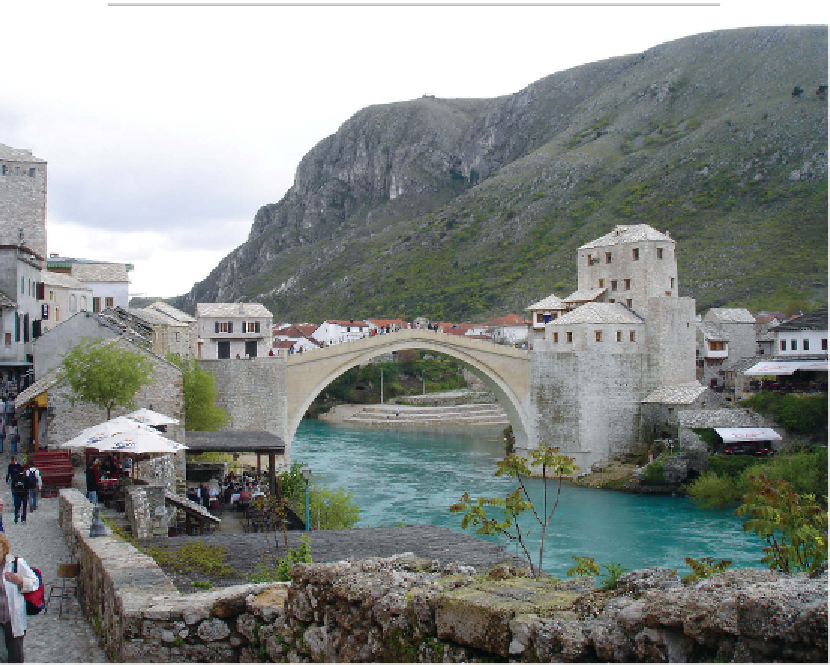Travel Reference
In-Depth Information
Bosnian Hormones and a Shiny New Cemetery
Exploring the city of Mostar—with its vibrant humanity and the persis-
tent reminders of its recent and terrible war—was both exhilarating and
exhausting.
Mostar represents the best and the worst of Yugoslavia. During the Tito
years, it was an idyllic mingling of cultures—Catholic Croats, Orthodox
Serbs, and Muslim Bosniaks living together in relative harmony, their dif-
ferences spanned by an Old Bridge that symbolized an optimistic vision of a
Yugoslavia where ethnicity didn't matter. And yet, as the country unraveled
in the early 1990s, Mostar was gripped by a gory three-way war among those
same groups. Not that long ago, the people I now encountered here—those
who set me up at a computer terminal in the cybercafé, stopped for me when
I jaywalked, showed of their paintings, and directed the church choir—had
been killing each other.
Mostar's 400-year-old, Turkish-style stone bridge—with its elegant,
single, pointed arch—was symbolic of the town's status as the place where
East met West in Europe. h
en, during the 1990s, Mostar became the
Mostar's beloved, Turkish-style Old Bridge is rebuilt and once again brings hope
that East and West can meet and mix gracefully.















































































